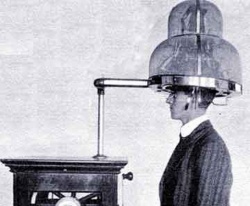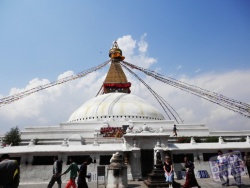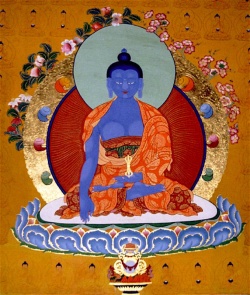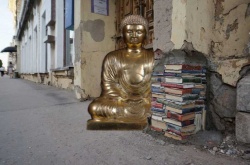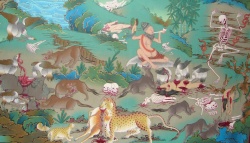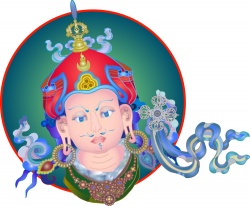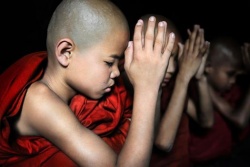The Body in Tibetan Buddhism
Willa Miller’s dissertation focuses on Yang dgon pa Rgyal mtshan dpal’s (1213-1258) Explanation of the Hidden Vajra Body (Rdo rje lus kyi sbas bshad), and provides Buddhist and Tibetan studies scholars a rare portrait of a tantric soteriology that positions the human body from its coarse to subtle levels as the basis, path, and fruit of Buddhist enlightenment.
Buddhist doctrine normally places the mind as the primary basis for cultivation, but in an important move, Miller focuses on the extraordinary and unique emphasis of the body, and its radical inseparability from the mind and speech in Yang dgon pa’s work.
To do this, Miller meticulously parses and explores the pivotal and multivalent term, dngos po’i gnas lugs, broadly meaning in Yang dgon pa’s theorizations “the entire situation of human embodiment.”
The first chapter of the dissertation provides details of Yang dgon pa’s life and the historical context of the Buddhist renaissance in Tibet during the twelfth and thirteenth centuries.
Such details reveal an environment of both sectarian competition and strife and counter to this, intense cross-fertilization of ideas, tantric lineages and texts.
Yang dgon pa himself had four major teachers from both the Sa skya and Bka’ brgyud lineages, including the politically powerful Sa skya Paṇḍita Kun dga’ rgyal mtshan (1182-1251).
We also learn that although Yang dgon pa was influenced by his teachers, his vision of the body that manifests in Explanation of the Hidden first appeared to him in visions during his twenties.
It is here that Miller points to an important theme in his theory of Buddhist enlightenment: the divine or “vajra body” is already always present in the body of every human being but requires education and a teacher to be revealed and experienced.
In the second chapter Miller examines the textual history of the central organizing term of Yang dgon pa’s Explanation of the Hidden, as well as her thesis—[[dngos po’i [gnas lugs]]—first in the Tibetan Buddhist sūtric and tantric canon, and second within his own Bka’ brgyud lineage.
In the Buddhist canon, the term dngos po’i gnas lugs (as well as the related term, dngos po’i rang bzhin) ranged in meaning between an objective, metaphysical knowledge to a subjective, embodied knower.
The faintly somatic shades of meaning were further developed in tantra wherein the body, often denigrated in Buddhist doctrine, is elevated to a kind of deified status.
The six doctrines of Nāropa (Nā ro chos drug) and their related commentarial literature, a key tantric lineage influencing Yang dgon pa, identifies a dngos po’i gnas lugs of the body (lus) and one of the mind (sems), making the body foundational as something to be known on the Buddhist path.
Another influential Bka’ brgyud source for this term that inspired Yang dgon pa’s work is Phag mo gru pa Rdo rje rgyal po’s (1110-1170)
Nature of the Vajra Body (Rdo rje lus kyi gnas lugs).
Similar to Yang dgon pa’s, this work presents a body map of channels, winds and quintessences which firmly position dngos po’i gnas lugs as a basis for the tantric path.
Miller argues that although soteriological value is given to the subtle body in these and other tantric works, the mind remains central in the realization of enlightenment.
A key departure of Yang dgon pa, she argues, is how he uniquely centralizes the body and expands ]]dgnos po’i gnas lugs]] to subsume the mind as a category of body.
Having examined the range of meanings associated with dngos po’i gnas lugs, the third chapter explores how Yang dgon pa uses this critical term as an organizing principle in his Explanation of the Hidden Vajra Body.
Looking at Yang dgon pa’s introductory statements, as well as a commentary by his chief student Spyan snga ba Rin chen ldan (b. 1202), Miller carefully presents how Yang dgon pa posits the centrality of the human body in the cultivation of Buddhist enlightenment via doctrinal innovations concerning dngos po’i gnas lugs.
One of Yang dgon pa’s key innovations is the expansion of Nāropa’s organizational use of this term from two to four categories: from body and mind to body, speech, mind and fourthly, body, speech and mind inseparable.
Through exploring these divisions of dngos po’i gnas lugs, Miller shows how Yang dgon pa subsumes mind and speech as parts of the body, and further establishes the body through its life stages of birth, death, and rebirth, and from its coarse to subtle levels, as the foundation of Buddhist practice.
In this way, Miller also points to Yang dgon pa’s understanding of dngos po’i gnas lugs as an innate property or the “entire situation” (gnas lugs) of human or “material” embodiment (dngos po) wherein the ordinary human body,
being undergirded and inseparable from a subtle “vajra body” of channels, winds, and vital essences, is already and always the enlightened deity’s maṇḍala.
Hence, as Yang dgon pa tells us in his initial remarks, although the dngos po’i gnas lugs of the vajra body exists in everyone, it remains “hidden” to the uneducated and uninitiated.
Miller suggests that this remarkable understanding of a materiality of enlightenment underscores a doctrinal or theoretical move that establishes the body—and specifically the proper understanding, instruction and experience of the vajra body—as the basis of Buddhist practice.
In the fourth chapter Miller provides a careful unpacking of Yang dgon pa’s vision of the “hidden vajra body” through an explanation of the dngos po’i gnas lugs of the body, speech and mind.
This lengthy chapter is rich in detail and shows meticulously how Yang dgon pa bridged the quotidian body and its concerns with the vajra body using common tantric tropes (such as embryology) to demonstrate the “radical” interdependence and inseparability of body, speech, and mind.
Throughout her close textual reading of Explanation of the Hidden, Miller points to the many strategies and concepts, such as quintessence (dwangs ma), that Yang dgon pa uses to maintain the body,
particularly the “hidden vajra body” rather than the mind as the basis of Buddhist practice and experience.
The fifth chapter, which looks at the last third of Explanation of the Hidden, presents Yang dgon pa’s fourth dngos po’i gnas lugs, the inseparability of body, speech, and mind.
Here, Miller points to ways that Yang dgon pa uses the notion of the body’s changeability—to be born, grow, age, and die—to show the inseparable relations between the mind and body in particular.
Miller shows how Yang dgon pa makes the final push for the inseparability of body, speech, and mind by demonstrating how they are interdependent, mutually causative, overlapping or integrated, and finally, how the body,
speech, and mind continues in the intermediate state after death.
Miller suggests that the inseparability of the three, in conjunction with the emphasis of the body as the locus of tantric cultivation and experience, shifts the description of what Buddhist realization is:
from a static and unchanging principle of a luminous, realizing mind, to that of a fluctuating and ever-changing material embodiment.
The conclusion of the dissertation is a brief discussion of the theoretical and doctrinal implications of Yang dgon pa’s radical positioning of the body as the foremost thing to be known and understood on the Buddhist tantric path.
Miller points to how Yang dgon pa reformulates and expands the category of dngos po’i gnas lugs to “form the basis of a tantric lexicon of embodiment” that is both recognizable and innovative in its approach to tantric realization (p. 319).
Miller concludes that for Yang dgon pa, dngos po’i gnas lugs can properly be understood as encompassing the totality of the coarse and subtle “vajra” aspects of body, speech and mind throughout one’s lifespan(s).
In other words, every aspect of human embodiment, from conception to death to the intermediate state, is dngos po’i gnas lugs.
Miller alerts us to the fact that Yang dgon pa’s unprecedented attention to the body in Explanation of the Hidden is not taken up by later authors, and by the thirteenth century—with the rapid institutionalization of the Buddhist tradition in Tibet,
and with it the emphasis on education and philosophical debate—the mind became firmly rooted as the primary locus of Buddhist cultivation.
In spite of this trend, Miller has illustrated that Yang dgon pa’s somatic vision of enlightenment shows how the body itself can be a critical term for analysis in Buddhism, an insight that Miller skillfully unpacks in her dissertation.
Jenny Bright
PhD Candidate
Department for the Study of Religion
jennifer.bright@mail.utoronto.ca
Primary Sources
Explanation of the Hidden Vajra Body (Rdo rje lus kyi sbas bshad) The Collected Works of Yang-dgon-pa Rgyal-mtshan-dpal Collected works of Spyan snga ba Rin chen ldan
Harvard University. 2013. 349 pp. Primary Advisor: Janet Gyatso.
